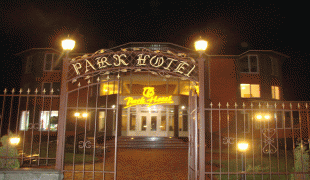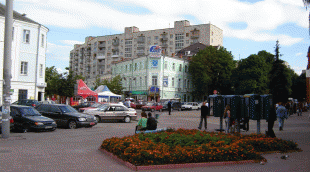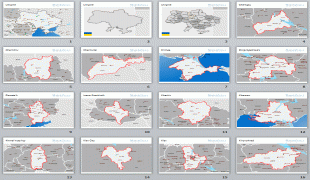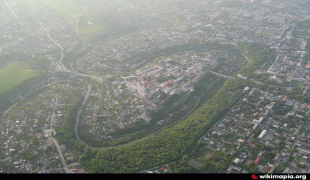Khmelnytskyi (Khmelnytskyi)
 |
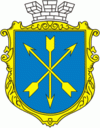 |
The city foundation date is uncertain. The territory where Khmelnytskyi is situated has been inhabited for a very long time. Many archaeological discoveries have been made in the city suburbs. For example, to the East of Lezneve district, there was a settlement from the Bronze Age 2000 B.C., and from Scythian times from 7–3 century B.C. The first mention of the city was written with Cyrillic alphabet. The earliest known mention in historical sources was in 1431, when it was known as Płoskirów (Ploskirov, Плоскиров) and was part of the Kingdom of Poland. It was a royal city.
Polish rule was briefly interrupted by Ottoman one between 1672 and 1699. During this period, it was nahiya centre in Mejibuji sanjak in Podolia Eyalet as Poloskiruf. After the Second Partition of Poland in 1793, the city was annexed by the Russian Empire and was renamed Proskurov (Проскурoв). According to the Russian census of 1897, Proskurov with a population of 22,855 was the fifth largest city of Podolia after Kamianets-Podilskyi, Uman, Vinnytsia and Balta. In 1920 it became part of Soviet Ukraine. In 1954 the city was finally renamed Khmelnytskyi (Хмельницький) in the honor of the 300th anniversary of a treaty negotiated by Bohdan Khmelnytsky.
After new archival sources presented at the 2006 conference City of Khmelnytskyi in the Context of Ukrainian History post-dated the city’s earliest mention from 1493 to 1431, it changed its official 513th anniversary commemoration to its 575th.
Map - Khmelnytskyi (Khmelnytskyi)
Map
Country - Ukraine
 |
 |
| Flag of Ukraine | |
During the Middle Ages, Ukraine was the site of early Slavic expansion and the area later became a key centre of East Slavic culture under the state of Kievan Rus', which emerged in the 9th century. The state eventually disintegrated into rival regional powers and was ultimately destroyed by the Mongol invasions of the 13th century. The area was then contested, divided, and ruled by a variety of external powers for the next 600 years, including the Polish–Lithuanian Commonwealth, the Austrian Empire, the Ottoman Empire, and the Tsardom of Russia. The Cossack Hetmanate emerged in central Ukraine in the 17th century, but was partitioned between Russia and Poland, and ultimately absorbed by the Russian Empire. Ukrainian nationalism developed, and following the Russian Revolution in 1917, the short-lived Ukrainian People's Republic was formed. The Bolsheviks consolidated control over much of the former empire and established the Ukrainian Soviet Socialist Republic, which became a constituent republic of the Soviet Union when it was formed in 1922. In the early 1930s, millions of Ukrainians died in the Holodomor, a man-made famine. During World War II, Ukraine was devastated by the German occupation.
Currency / Language
| ISO | Currency | Symbol | Significant figures |
|---|---|---|---|
| UAH | Ukrainian hryvnia | â‚´ | 2 |
| ISO | Language |
|---|---|
| HU | Hungarian language |
| PL | Polish language |
| RU | Russian language |
| UK | Ukrainian language |









